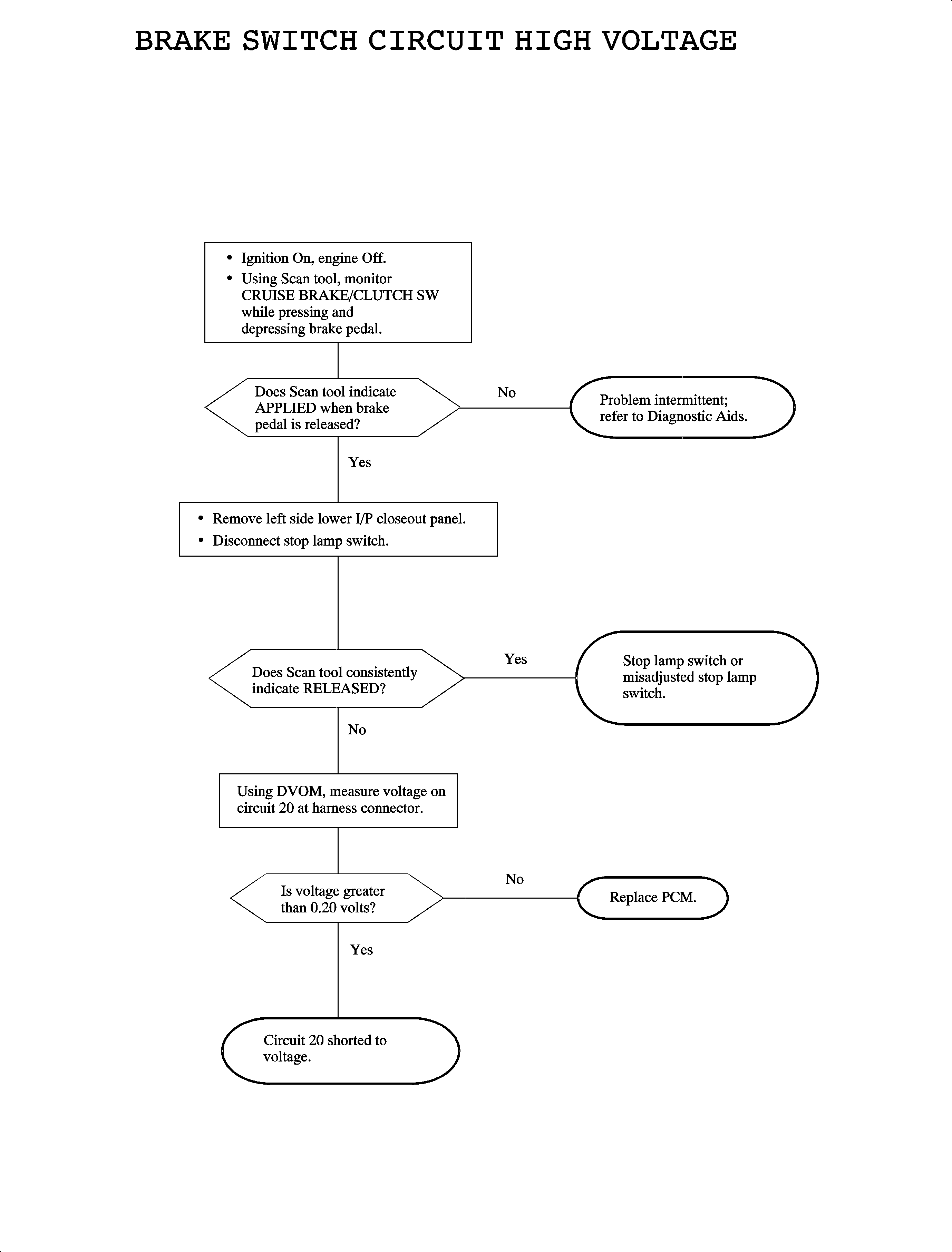
The stop lamp switch is used to turn ON the stop lamps and serve as a brake pedal input to the PCM. The stop lamp switch contact is closed with the brake pedal depressed and switch adjusted properly. Ignition voltage is supplied to the PCM through the stop lamp switch whenever the ignition is turned ON and the brake pedal is depressed. When the brake pedal is released, the PCM brake switch input goes low. The PCM monitors the brake switch input for low and high voltage faults under certain conditions. DTC P0719 sets when the vehicle has accelerated a set number of times and the voltage at the PCM remains high, indicating the brake pedal is always being applied.
Conditions for Setting the DTC
DTC P0719 will set if ignition voltage is present at the PCM brake switch input when the vehicle has accelerated 8 times in 1 ignition cycle in the following manner:
- The vehicle speed is less than 8 km/h (5 mph) for 6 seconds.
- The vehicle speed is between 8-32 km/h (5-20 mph) for 4 seconds.
- Vehicle speed is greater than 32 km/h (20 mph) for 6 seconds.
DTC P0719 diagnostic runs once per ignition cycle. The PCM will only fail the DTC after 15 minutes have elapsed during which all 8 tests must have failed.
DTC P0719 is a type D DTC.
Diagnostic Aids
To locate an intermittent problem, use the scan tool to monitor CRUISE BRAKE/CLUTCH SW with the brake pedal released while wiggling the wires. The scan tool will read APPLIED when ignition voltage is present at the PCM brake switch input. Wiggling the wires while watching for a change from RELEASED to APPLIED may locate the area where a shorted switch or short to voltage in the wiring could lie.
The stop lamp switch should be open across its terminals when the plunger is all the way in.
The stop lamp switch plunger can be adjusted. Refer to "Stop Lamp Switch Adjustment" procedure in this section if adjustment is needed.

